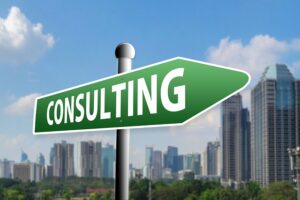 Congratulations! You’ve taken the first step on the road to becoming a consultant. By choosing to read this blog series, you have decided to explore the opportunities available to you in consulting. Throughout this series, I will be addressing the key questions you need to ask yourself prior to making the leap. I’ll start at the beginning with a fundamental question:
Congratulations! You’ve taken the first step on the road to becoming a consultant. By choosing to read this blog series, you have decided to explore the opportunities available to you in consulting. Throughout this series, I will be addressing the key questions you need to ask yourself prior to making the leap. I’ll start at the beginning with a fundamental question:
WHAT IS YOUR VISION OF YOUR CONSULTING CAREER?
The first thing any consultant needs to do is identify what type of consulting career you want or need. This basic vision of how you want your career to develop is critical to answering all the other questions I pose. Here’s some guiding questions to help you begin the process of defining your life as a consultant.
Is this temporary or permanent? Some people (like myself) choose to go into consulting as a permanent move. If this is the case, then you need to put into place a formal process to develop a market and clientele for your services. You need to develop a structure to enable your success (which we will talk about over several blog posts). Others get into consulting for a short period of time for a variety of reasons (unemployment, family commitments, need for temporary flexibility, etc.). In these cases, you may not want or need a formal approach to succeed.
Where are you in your career? Understanding where you are in your professional development is critical to knowing how your consulting career will develop from the beginning. If you are nearing retirement, you may be looking at consulting as a part-time engagement to keep your skills and mind sharp. You may only engage in the types of opportunities you find most desirable. If you are a senior proposal professional but not quite ready to stop working full-time, you will likely take on more work but can usually demand greater pay due to your expertise and experience. If you are a more junior professional, you might not have the flexibility of the others and will likely need to prove yourself to command a higher rate.
How much do you want/have to work? This is closely related to the previous point. If you are the primary or sole provider for your family, you have an obligation to work a significant amount. On the other hand, if this is a side hustle or part of a semi-retirement plan, your required hours for the year will be significantly less. Knowing the target number of hours you have for a year helps set you up for success.
 How strong is your network? This question is critical to knowing where your next project will come from. If you have a strong, deep, diverse network you can use it to cultivate and develop opportunities. On the other hand, without solid connections, it will be a struggle to find work on your own. Prior to founding BZ, I spent 12 to 18 months actively growing and tending to my network, including expanding my reach outside of the proposal space to include more BD and executive level individuals across industry. I attended industry events, used LinkedIn to comment on posts and connect with individuals, and reached out to people in my personal network who were in Government contracting. This sustained effort allowed me to leverage those new relationships to find work and grow the company.
How strong is your network? This question is critical to knowing where your next project will come from. If you have a strong, deep, diverse network you can use it to cultivate and develop opportunities. On the other hand, without solid connections, it will be a struggle to find work on your own. Prior to founding BZ, I spent 12 to 18 months actively growing and tending to my network, including expanding my reach outside of the proposal space to include more BD and executive level individuals across industry. I attended industry events, used LinkedIn to comment on posts and connect with individuals, and reached out to people in my personal network who were in Government contracting. This sustained effort allowed me to leverage those new relationships to find work and grow the company.
What type of work do you want to do? This may sound like an easy question, but it’s not. Even with traditional proposal development job titles, there’s a lot of wiggle room. If you are a proposal manager, do you want to focus on process or be what most of our clients need, a Swiss Army Knife professional who can tackle multiple roles on a bid? If you are a writer, what are your area(s) of expertise (not just technical functions but do you prefer to write management volumes or resumes or past performance)? Are there agencies or technical subject matter you want to focus on? Are there certain types of firms you want to engage with (small businesses, large businesses, certain socio-economic categories)? Knowing the answers to these questions is critical to how you will engage as a consultant.
Do I want to work for consulting firms? A final question to ask up front is how do I want to get work. Some consultants simply work as independent 1099s with their own, small client base and carve out a comfortable living. For the vast majority, however, there is a need to engage with one or more consulting firms to get work. Unless you have a significant pipeline of work through your own network, I highly recommend you engage with consulting firms and get your resume in their hands. It allows you to leverage their depth and expertise to find work. Remember that in these situations you may need to accept a lower rate than if you are directly billing the client yourself. I also highly recommend you do not commit to exclusivity with one firm, especially at the beginning. This provides you the ability to cast the widest possible net with which to get new work.
Conclusion. Before you begin consulting, you need to clearly define what you want out of a consulting career. Only when you have a clear vision of your goals, desired areas of focus, and time commitments can you begin looking at how to implement that vision.
Next time, I will cover the second key question: “What is your financial framework?”


 evaluate whether the proposal “answers the mail.” You need the bench strength to gauge how well your company tells its story and puts its best foot forward. The combined expertise is critical to producing major, complex proposals where the competition is cut-throat. Given that proposals have a million moving parts, an experienced proposal manager is also vital to orchestrating all of the steps and problem solving when inevitable curveballs are thrown in the path. Your writers, editors, graphic designers, and production team play important roles in developing the content and creating the polished product. A great proposal team really is greater than the sum of its parts.
evaluate whether the proposal “answers the mail.” You need the bench strength to gauge how well your company tells its story and puts its best foot forward. The combined expertise is critical to producing major, complex proposals where the competition is cut-throat. Given that proposals have a million moving parts, an experienced proposal manager is also vital to orchestrating all of the steps and problem solving when inevitable curveballs are thrown in the path. Your writers, editors, graphic designers, and production team play important roles in developing the content and creating the polished product. A great proposal team really is greater than the sum of its parts. At a bare minimum, your editor can really use comprehensive notes from these meetings. And the more they can see of actual drafts, the more they will be prepared when the real thing comes along.
At a bare minimum, your editor can really use comprehensive notes from these meetings. And the more they can see of actual drafts, the more they will be prepared when the real thing comes along. 

 This series of posts looks to provide people interested in consulting with some insight on what questions, issues, and opportunities are out there today. While consulting has worked well for me and many others, it is not for everyone. There is risk inherent in going out on your own. Therefore, even with the information laid out in these posts, I encourage you to take time and make sure you consider all the options, positives, negatives, and risks associated with consulting before making your own decision.
This series of posts looks to provide people interested in consulting with some insight on what questions, issues, and opportunities are out there today. While consulting has worked well for me and many others, it is not for everyone. There is risk inherent in going out on your own. Therefore, even with the information laid out in these posts, I encourage you to take time and make sure you consider all the options, positives, negatives, and risks associated with consulting before making your own decision.
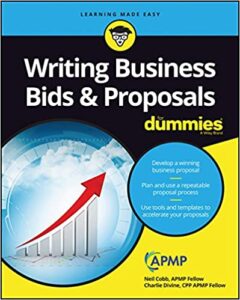
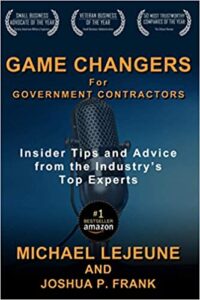 Game Changers for Government Contractors: Insider Tips and Advice from the Industry’s Top Experts
Game Changers for Government Contractors: Insider Tips and Advice from the Industry’s Top Experts 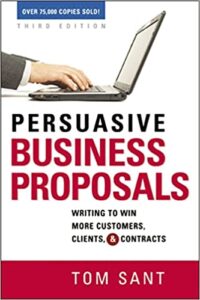 Persuasive Business Proposals: Writing to Win More Customers, Clients, and Contracts
Persuasive Business Proposals: Writing to Win More Customers, Clients, and Contracts 
 For the uninitiated, every Federal Government opportunity will fall into a pre-selected type. The Federal Acquisition Regulation (FAR) defines a dozen different contract types. The contract type dictates how the work is performed, how payment to the Prime contractor is delivered, and how the Government anticipates receiving the goods or services they are seeking through the program. Almost always, contracting boils down to a question of risk. What is the Government willing to take on regarding performance risk? Is the schedule proposed attainable? Is the goal achievable?
For the uninitiated, every Federal Government opportunity will fall into a pre-selected type. The Federal Acquisition Regulation (FAR) defines a dozen different contract types. The contract type dictates how the work is performed, how payment to the Prime contractor is delivered, and how the Government anticipates receiving the goods or services they are seeking through the program. Almost always, contracting boils down to a question of risk. What is the Government willing to take on regarding performance risk? Is the schedule proposed attainable? Is the goal achievable?  Indefinite-Delivery Indefinite-Quantity:
Indefinite-Delivery Indefinite-Quantity: 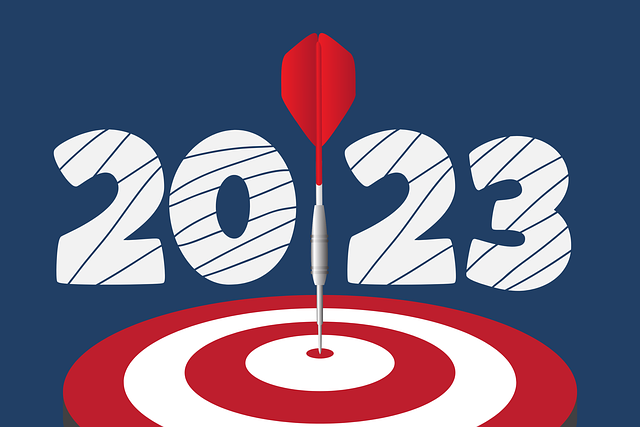
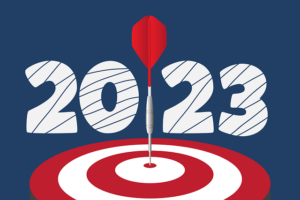 Do your homework
Do your homework Get the basics in place
Get the basics in place